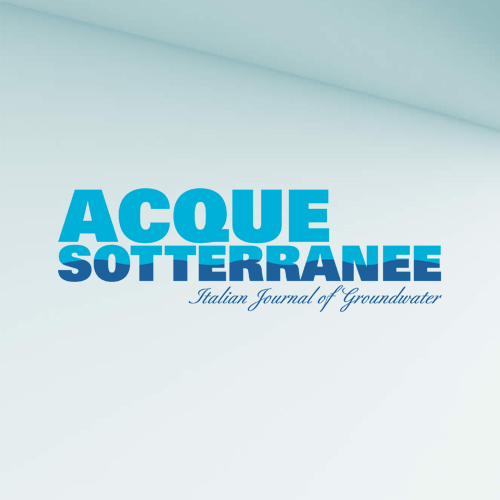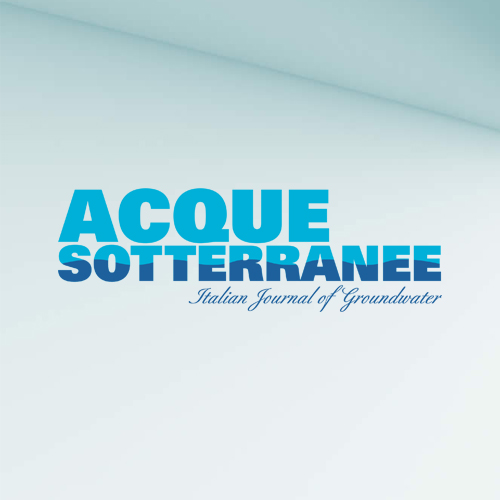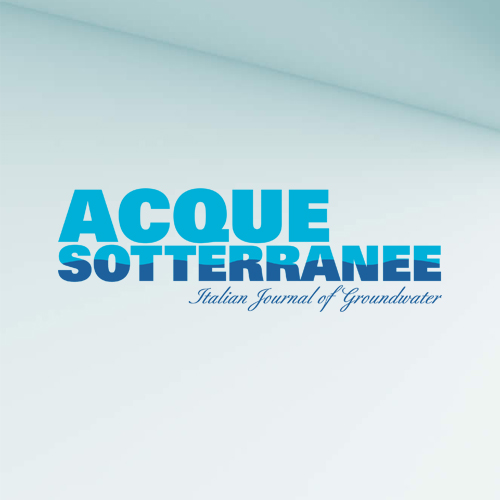Spatio-temporal variability of groundwater hydrochemical features in different hydrogeological settings in Piedmont and Campania regions (Italy), a comparative study
Accepted: 19 March 2024
SUPPLEMENTARY MATERIALS: 106
All claims expressed in this article are solely those of the authors and do not necessarily represent those of their affiliated organizations, or those of the publisher, the editors and the reviewers. Any product that may be evaluated in this article or claim that may be made by its manufacturer is not guaranteed or endorsed by the publisher.
Authors
The spatio-temporal evolution of groundwater chemistry has seen an increase in interest over the last decade at a global level. Identifying and discerning the sources of the natural and anthropogenic compounds and the actual hydrochemical processes, as well as their evolution, is essential to support a sustainable planning for managing and protecting groundwater resources at the present time and in the future. The main objective of this study is the comparison of two study areas in Italy (Piedmont and Campania Regions), different in their geographical and geological contexts and climate conditions, to highlight the similarities and differences in the hydrogeochemical behavior in space and time. Three main ions were considered (NO3 –, SO4 2–, Na+) and analyzed to identify the sources and hydrochemical processes responsible for their spatial distribution in the 2015-2020 period and evaluate the existence and the potential causes of trends in their concentration for the 2000-2020 period. Results highlight specific factors and processes distinguishing the spatial distribution and temporal variability of ion concentrations in Piedmont and Campania study areas. These processes are mainly related to the geological and geographical features of the study areas. In both areas, a significant influence of anthropogenic pressures emerges for both spatial and temporal evolutions, with remarkably increasing trends in NO3 – concentrations. In conclusion, some factors and processes emerge as site-specific, mainly related to the geological aspects and natural hydrochemical processes, whereas others are in common (i.e., anthropogenic impacts); thus, reinforcing the advantage of making comparative studies.
How to Cite

This work is licensed under a Creative Commons Attribution-NonCommercial 4.0 International License.
PAGEPress has chosen to apply the Creative Commons Attribution NonCommercial 4.0 International License (CC BY-NC 4.0) to all manuscripts to be published.
Similar Articles
- Abdelkader Otmane, Radia Gherissi , Kamila Baba-Hamed, Abderrazak Bouanani, Qualitative evaluation of groundwater in terms of its suitability for drinking and irrigation. The case study of Sidi-Bel-Abbes alluvial aquifer (NW Algeria) , Acque Sotterranee - Italian Journal of Groundwater: Vol. 12 No. 3 (2023)
- Stefano Menichetti, Stefano Tessitore, Time series analysis for water resources management - application to observed and simulated time-series of the groundwater flow numerical model of the coastal plain of Cecina , Acque Sotterranee - Italian Journal of Groundwater: Vol. 10 No. 3 (2021)
- Maria Filippini, Migration of chlorinated hydrocarbons in multilayer unconsolidated porous media: a case study from the Po Plain, Italy , Acque Sotterranee - Italian Journal of Groundwater: Vol. 6 No. 4 (2017)
- Giuseppe Capelli, Alessio Argentieri, The "Ovito" Hydrometrographic station (Carseolani Mounts, Central Apennines). A great adventure born from an innovative idea , Acque Sotterranee - Italian Journal of Groundwater: Vol. 7 No. 2 (2018)
- Francesca Lotti, John Doherty, The role of numerical models in environmental decision-making , Acque Sotterranee - Italian Journal of Groundwater: Vol. 5 No. 3 (2016)
- Giovanni Pietro Beretta, Some aspects of the state of the art of contaminated sites remediation in Italy , Acque Sotterranee - Italian Journal of Groundwater: Vol. 4 No. 2 (2015)
- Przemys?aw Wachniew, Environmental tracers as a tool in groundwater vulnerability assessment , Acque Sotterranee - Italian Journal of Groundwater: Vol. 4 No. 2 (2015)
- Nicola Conti, Roberto Salvadori, Massimo Aiello, Dewatering e bonifica dell' area "ex Whitehead Motofides" (Pisa, Italia) , Acque Sotterranee - Italian Journal of Groundwater: Vol. 3 No. 4 (2014)
- Pio Positano, Marco Nannucci, The H2O20 FREEWAT participated approach for the Follonica-Scarlino aquifer case study. A common space to generate shared knowledge on the value of water , Acque Sotterranee - Italian Journal of Groundwater: Vol. 6 No. 3 (2017)
- Giorgia Lucianetti, Lucia Mastrorillo, Roberto Mazza, Piergiovanni Partel, Groundwater response to precipitation extremes: the case of the "Vaia" storm (Eastern Italian Alps) , Acque Sotterranee - Italian Journal of Groundwater: Vol. 8 No. 4 (2019)
<< < 8 9 10 11 12 13 14 15 16 17 > >>
You may also start an advanced similarity search for this article.


 https://doi.org/10.7343/as-2024-748
https://doi.org/10.7343/as-2024-748










